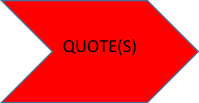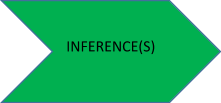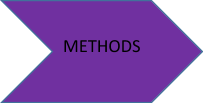Question 4: Response Guidance
Mark Scheme
It is important that you understand the mark scheme, because this is what teachers are looking at to judge your work. I want you to focus on how you can get the top marks for each question.
Remember this is the highest weighted question in Section A of both Language papers. Therefore, it’s a biggie that you need to get right!
Level 4 (16-20 marks): Perceptive, Detailed Evaluation
-Critically explores the effects of writer’s deliberate choices
-Identification and understanding of a range ofmethods
-Selects judicious textual detail
-Convincing and critical response to the statement posed.
Lower down the mark scheme:
Level 3 –Clear, Relevant Evaluation
Level 2 – Some Evaluation
Level 1 – Simple, Limited Comment
Writing Frame
As I mentioned before, different schools use different writing frames to guide responses (P.E.E. or P.E.A. or P.E.E.L, P.E.A.C.E. etc). But, really, even on this highly-weighted question it’s still best if you’re a free spirit in your response and move through your analysis as you desire. Those who are awarded the best marks are not restricted by sticking to the acronyms mentioned above.
See the diagram, you can jump between the colours at times that you see are appropriate and logical:
Formulate Response
For example, A student said, ‘When the characters face the __tragic event, it made me feel ____extremely sorry__ for them.‘
Agree with the Statement
- First you need to understand the statement! Highlight key words that the commenter expressed in response to the text.
- Review the section of the extract that is being referred to.
- Highlight several instances that could have affected the commenter.
- Make clear and succinct statements that directly indicate to what extent you agree with the commenter.
For example, use phrases such as; certainly agree…, definitely agree…, mostly agree…, partially agree…
S.I.T.E: Setting, Ideas, Themes, Events
- Look at your annotations, which category do they fit into? What lessons are being expressed in the text? What is the writer’s intention?
For example, The writer presents the theme of…
Quotation(s)
- Select evidence from the piece of text that you highlighted. Make sure you include judicious pieces that support the comments you have made.
Methods
- Within your quotations, comment on how the writer skillfully uses language and/or structure to convey deeper meanings. (Exploration of both methods are important for a successful response.)
For example, The writer deliberately uses an adjective to convey the idea that…
Inference(s)
- Explore meanings that are intended though use of the language technique. Can you find any deeper meanings that match the whole text? What could it suggest further that isn’t initially obvious?
Effect(s)
- Explore the various thoughts and reactions that the reader may be experiencing, due to the techniques that have been used. Be critical and offer your judgement; do you think the writer has been successful in their intention?
Link
- Reiterate your response to the initial statement, drawing final conclusions.
- You can repeat this process (Quotes(s), Methods, Inference(s), Effect(s)) as many times as possible, to squeeze as much meaning out the quotation in relation to your initial statement. There will be many things to write about as you deconstruct the text. The deeper you dig, the more perceptive you will become!
- What must you do decide?
- Your answer should include: Extent / Agree / Disagree
- What type of methods must you search for in the text?
- Your answer should include: Language / Structure
- What must you do at the end of your analysis?
- Your answer should include: Link / Conclusions







